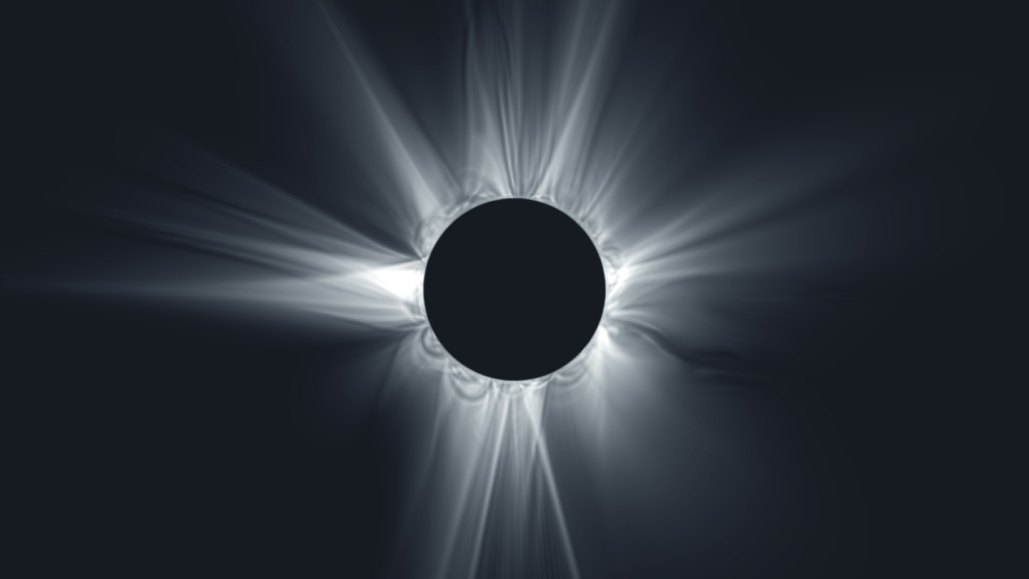The Accuracy of Predictions for the Sun's Corona During the 2024 Eclipse

The fiery corona of the sun, a spectacular sight, is usually only visible during a total solar eclipse. Researchers at Predictive Science Inc, based in San Diego, had an idea about what eclipse enthusiasts might observe, even before the much-anticipated astronomical occurrence on April 8 (SN: 4/8/24).
From 1994, this private enterprise has been developing advanced computer simulations of the sun's vibrant and magnetized environment. This is a resource for researchers who need to better grasp the evolution of the atmosphere. These simulations continually incorporate data about the corona to provide a prognosis of its appearance during eclipses.
Cooper Downs, an astrophysicist at Predictive Science, notes that such forecasts are extraordinarily crucial for those examining the corona. He says it can assist in planning, indicating where to focus their tools based on the prediction.
Just a few minutes before the April 8th event, the firm released its final prediction for the eclipse. However, it continued gathering data and running its model for a subsequent fortnight. In reality, the prediction approximated but did not exactly equate with the corona's appearance, forecasting several elongated streams that were displaced slightly. Regardless, Downs reassures that observers were still able to collect essential data, since they referred to other resources such as satellite images in order to make their plans and focus on substantial and stable streams.
Nonetheless, Downs was not disheartened because of the model's discrepancies. These shortcomings merely highlight a need for more comprehensive sun observations, he says.
In terms of providing additional information about the sun's corona, Downs believes total solar eclipses are rare, but excellent opportunities. When the sun is obscured by the moon, he says, it creates the most perfect covering.
Synchronised observations and simulations bring researchers closer to understanding old mysteries such as why the corona, with an estimated temperature of around a million degrees Celsius, is substantially hotter than the surface, which is estimated to be around 5,500 degrees Celsius (SN: 8/20/17). Forecasts are also vital to predict space weather events where the sun discharges radiation and charged particles that can interfere with satellite communications and impact electronic devices on Earth.
Space weather predictions are far less accurate than terrestrial weather forecasts, as Downs notes: “They’re not even close”.
Limited data contributes to this disparity in prediction accuracy. While atmospheric researchers can use weather stations and balloons scattered across the globe, those examining the sun predominantly have a singular two-dimensional perspective of it at any one moment. From this limited viewpoint, solar scientists have to extrapolate the full 3D structure of the corona, including aspects like its temperature, density, outflows, and magnetic structure.
To observe the diffused corona, researchers employ methods to dull the sun's brilliance. They sometimes use an artificial coronagraph, which is an opaque disk in a telescope that blocks out the sun and some of the space surrounding it, making its atmosphere visible. During an eclipse, however, instruments can see the entirety of the corona, from the sun's surface outwards. The moon's extensive shadow also dim the entire sky, revealing fainter corona features.
Creating predictions of the corona's appearance during an eclipse helps validate computer models of the corona, according to Chip Manchester, a solar physicist at the University of Michigan in Ann Arbor who also develops such simulations. He posits that the more closely the model matches real-world observations, the better it reflects in comprehending the fundamental physics.
Detailed forecasting for the 2017 total solar eclipse was facilitated by the fact that it occurred near solar minimum, the lowest point in the sun's 11-year activity cycle. At this phase, the solar activity is relatively steady, with abrupt changes being far and few. Downs could issue the company's prediction about the corona's appearance 7 days before the eclipse, and observed that the projections fairly matched the reality.
This year, the sun is nearing the most active part of its cycle, known as the solar maximum. Downs asserts that this increased activity caused much of the discrepancy between the eclipse prediction and reality. This is mainly because, at solar maximum, the sun is much more dynamic, with frequent flares erupting unpredictably. Details about eruptions on the unseen far side of the sun couldn't be factored into the simulations until the sun's rotation brought these hidden activities into view.
Downs laments that the model lacked some of the dynamically incoming data, remarking: “There’s nothing we can do. We can’t make up data.”
For the April eclipse, the company had access to extremely up-to-date information from NASA’s Solar Dynamics Observatory, which watches the sun from Earth orbit (SN: 4/21/10). The simulations got an extra boost from the European Space Agency’s Solar Orbiter, a satellite traveling around the sun that got to witness the eclipse while off to one side relative to our planet, taking magnetic readings and other data (SN: 2/9/20).
Ideally, Manchester says, solar scientists would have at least three spacecraft spaced equally apart in orbit around the sun. “Then you would see what’s coming around from the backside.”
That setup won’t be available for the foreseeable future. But ESA has plans to bolster its observations of the corona with the PROBA-3 mission, which will block out the sun’s central regions with a coronagraph to study its outer atmosphere and is expected to launch this year. In 2029, the agency will also send up the Vigil spacecraft, a space weather observatory that can watch potentially hazardous solar activity before it rolls into view from Earth.
Downs is already working with the PROBA-3 team to simulate how their views of the sun will look after launch and is hopeful that the satellite’s data will improve predictions for the next total solar eclipse, which will grace the Arctic and far-Western Europe two years from now. “We are definitely looking forward to 2026,” he says.




